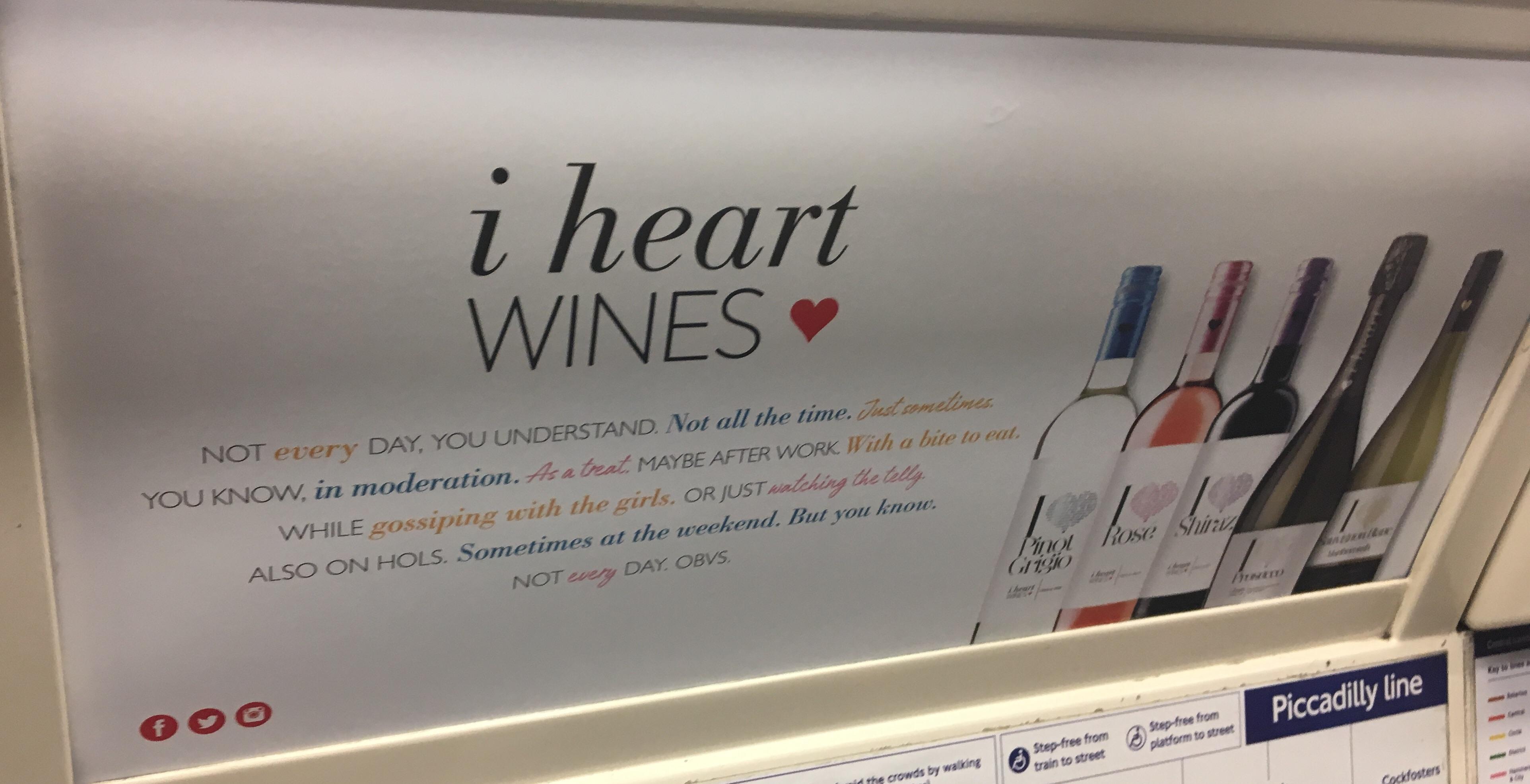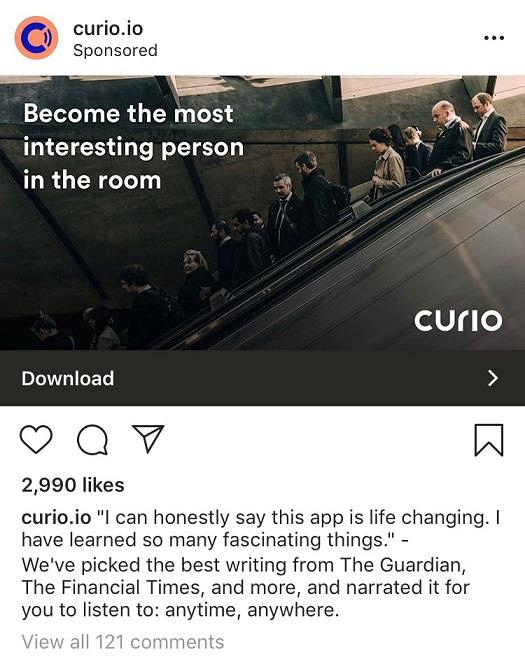When marketing campaigns fail because the copy missed the mark, it’s good to pull things apart and try to understand what went wrong. Not all failures have to be precisely that. We can always learn from our mistakes if we take the time to analyse why they did not achieve the desired outcome. Here are a few examples when the marketing copy is not good:
Steer clear of misconstrued messages
Sometimes brands produce a copy with a message that appears unclear and confusing to the reader. If your ad is not concise and straightforward, you might be open to a wrong meaning or interpretation by your audience. To exercise as much control as possible over your brand’s image and reputation, make sure your copy is in no way ambiguous.
Let’s take the wine brand I Heart Wines, as an example. A tube campaign saw them release an ad which read: “Not every day, you understand. Not all the time. Just sometimes. You know. In moderation. As a treat. Maybe after work with a bite to eat, while gossiping with the girls (…) But you know. Not every day. Obvs.” The first impression would be a tongue in cheek nod to the fact that many of us enjoy a tipple in a range of circumstances and probably slightly more often than we should. But if we looked from another angle, it could be perceived as an anti-drinking poster — precisely the opposite goal of the brand, which is to sell wine.
According to an article by Brafton.com, brands should take these suggestions into account when it comes to writing an impressive marketing copy:
- Recognise the specific type of content to be written.
- Work within the established framework for that format: character limits, SEO best practices and other relevant needs.
- Have a clear goal in mind.
- Build a connection with your reader.
- Start and end on high notes: A unique, engaging or perspective-changing opening and a clear, simple call to action at the end make marketing copy memorable and useful.
- Use the right tool for the job. Everything from customer stories to technical specifications can attract and drive customers, depending on the specific context. Choose the best fit for the piece of content you’re currently developing.
How to get started
To engage with the right audience and drive customers to your site, you need to follow some steps to ensure that your copy and overall content marketing is compelling and relevant for your users. As we mentioned in our Emoji Search article, brands must adapt their messaging according to the generation they are trying to appeal. The codes, language and expressions are different and evolving, so your marketing messages should reflect that.
After defining your target audience, you need to have a clear objective. What do you want to achieve with this message? There’s an overload of information on social media, so your brand needs to be as clear as possible. Tell your customers what to do and don’t forget to add a CTA. In fact, creating a sense of urgency is an effective way to attract the attention of your target audience. The FOMO (Fear Of Missing Out) has been proved a successful strategy when it comes to sales and promotional campaigns.
Data and reviews are great partners to back up your message. If you are trying to sell your products or services to a new segment of people, showing data and customers’ reviews will give these new users a sense of confidence out of your brand. Thus, they will probably check out what you have in store.
Avoid meaningless slogans and phrases.
Too often in a quest to create something short, concise and straightforward, brands end up producing a bland and meaningless slogan. Over the years many of the greatest tag-lines have been so simple. But that doesn’t mean it is easy to achieve. Nike’s iconic Just Do It is a case in point. This line, however, fits perfectly with the brands’ pioneering spirit that celebrates individualism.
A line used by other brands is less effective if it doesn’t fit with its established image. Lexus used the line Experience Amazing in its most recent campaign. We can take that as the “amazing experience” of driving one of their cars, but it seems more like two random words together. It lacks meaning and emotion.
Avoid jargon
Always simplify your message and onsite content. The internet is littered with About Us pages, that include massive, convoluted jargon, that does little to help the consumer understand and appreciate what the product or service is all about. Avoid technical terms or complicated explanation for things that can be said more commonly.
In conclusion, when it comes to bad copy, there are prominent examples. Ambiguous messaging, meaningless phrases and jargon-heavy rhetoric all serve to restrict the impact and effectiveness of your communications. The advice is simple: deliver a copy that enables your consumers to understand your brand’s ethos and encourage them to buy your products.











